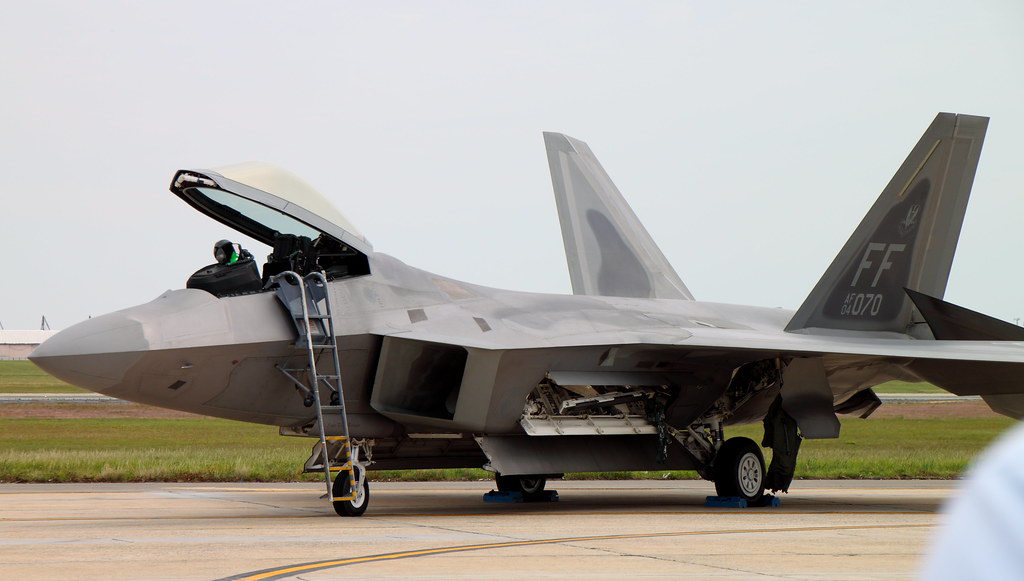
In the ever-evolving landscape of global air superiority, few aircraft command as much respect and awe as the F-22 Raptor. Once considered a titan designed for a bygone era, and at various points slated for an early retirement, this legendary stealth fighter is now not just here to stay but is undergoing a profound transformation. Thanks to a series of comprehensive upgrades and a renewed strategic vision, the Raptor is poised to extend its reign as America’s premier air superiority platform, becoming even more formidable in the face of emerging threats.
This isn’t merely a minor facelift; what we are witnessing is the birth of an F-22 “super” fighter, equipped with an array of advanced hardware and software enhancements. These upgrades are meticulously designed to bolster its stealth capabilities, elevate its sensor prowess, and integrate the latest in electronic warfare technology. It’s a testament to the F-22’s foundational design and its critical role in maintaining the U.S. Air Force’s dominance in the skies.
We are about to embark on an in-depth journey through the pivotal advancements that are redefining the F-22 Raptor. From its cutting-edge defensive systems to its refined stealth characteristics and networked sensor capabilities, each upgrade represents a significant leap forward. Join us as we explore how these innovations ensure the F-22 remains at the vanguard of military aviation, ready to confront the challenges of future conflicts and secure its place as the cornerstone of America’s air power for decades to come.
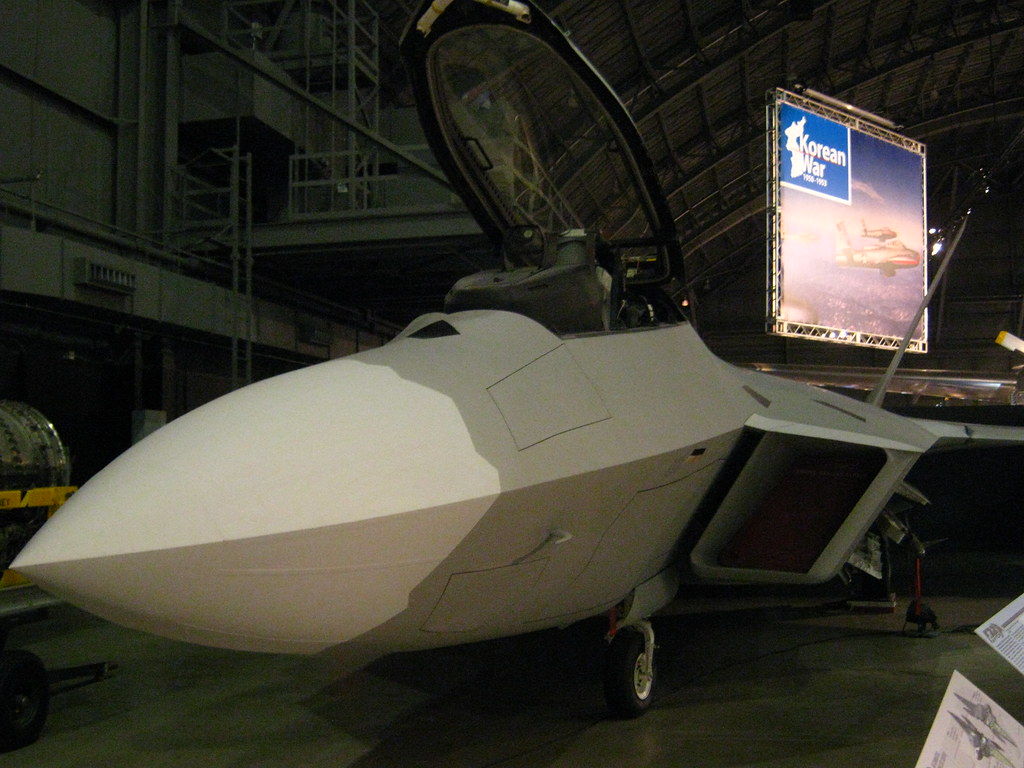
1. **The New “Viability” Upgrades Package**The U.S. Air Force has initiated a crucial “viability” upgrade package for its F-22 Raptor stealth fighters, signaling a robust commitment to ensuring their continued relevance and survivability against an array of emerging threats. This effort, formalized in the Air Force’s Fiscal Year 2026 budget request, marks a new start, with an initial funding request of $90.34 million. This investment underscores the strategic importance of the Raptor fleet, a force comprising 185 aircraft, with 143 designated as combat-coded.
The comprehensive nature of these upgrades is highlighted in the Air Force budget documents, which state, “Viability represents future procurement of hardware and software capability enhancements related to, but not limited to Low Observable (LO) signature management, Pilot Vehicle Interface (PVI), countermeasures, helmet, future crypto upgrades, dynamic Synthetic Aperture Radar (SAR), cyber security, Infrared Defensive System (IRDS), which involves improved missile launch detection capabilities, and Electronic Warfare (EW) system enhancements to counter evolving EW threat.” This extensive list touches upon nearly every critical aspect of the F-22’s operational capability.
Beyond technical specifications, the overarching goal of this viability package is to enhance the F-22’s participation in Joint operations, improving both situational awareness and mission effectiveness. Given the F-22’s small yet highly capable and in-demand fleet, these enhancements are vital for ensuring that each Raptor can perform at its peak, integrating seamlessly with other platforms to maintain air superiority in complex, high-stakes environments.
Military equipment: Object Desktop
Name: Object Desktop
Developer: Stardock
Logo: ObjectDesktop-Icon-256×256.png
LatestReleaseVersion: 4.3.7830.30748
LatestReleaseDate: [object Object]
OperatingSystem: Microsoft Windows
Genre: OS Customization
License: Proprietary license
Website: https://www.stardock.com/products/odnt/
Categories: Desktop environments, OS/2 software, Stardock software, Webarchive template wayback links, Windows Internet software
Summary: Object Desktop (OD; previously the Object Desktop Network or ODNT) is an online software subscription service created by Stardock for OS/2 and relaunched for Windows in 1997.
Object Desktop includes most graphical user interface customization and productivity products offered by Stardock, including WindowBlinds, Fences, DesktopX, Tweak7, IconPackager and ObjectBar.
Get more information about: Object Desktop
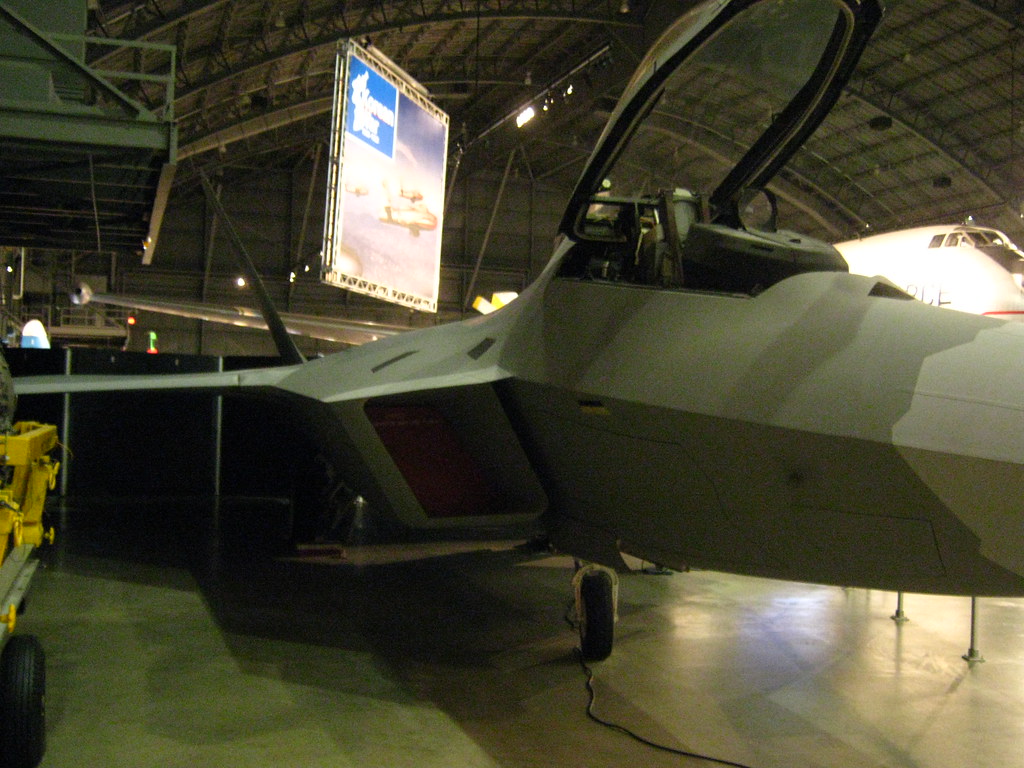
2. **Infrared Defensive System (IRDS)**A cornerstone of the F-22’s viability package is the newly announced Infrared Defensive System (IRDS), a critical enhancement aimed at significantly improving the jet’s threat detection capabilities. Lockheed Martin first unveiled plans for the F-22 to receive this system in January, confirming that it will leverage the company’s TacIRST infrared search-and-track sensors. These sensors, first introduced in 2022, have already seen integration, notably into the noses of F-5 Advanced Tiger aggressor jets operated by private contractor Tactical Air Support (TacAir).
The Air Force’s 2026 Fiscal Year budget proposal elaborates on the IRDS’s role, stating, “IRDS is the Program of Record (PoR) for the F-22’s Missile Launch Detector (MLD) modernization effort that is focused on detection of long-range Air to Air Missile (AAM) / Surface to Air Missile (SAM) threats and includes replacing legacy MLDs with new sensors.” This system is designed to provide advanced warning against the most sophisticated air-to-air and surface-to-air missile threats, a crucial capability in modern aerial combat. A formal decision regarding the low-rate initial production of IRDS for the F-22 fleet is anticipated in the fourth quarter of Fiscal Year 2026.
Currently, the F-22 relies on its AN/AAR-56 MLD system for spherical infrared threat warning. While it’s clear that the IRDS will improve upon these existing capabilities, the full scope of its functionality remains under evaluation. There’s a possibility that the IRDS could offer expanded capabilities akin to those provided by the F-35’s Distributed Aperture System (DAS) or similar setups, potentially revolutionizing the Raptor’s ability to detect and counter threats from all directions, even in complex and contested airspace.
Military equipment: Lockheed Martin F-22 Raptor
Name: F-22 Raptor
Caption: Kadena Air Base
Alt: F-22 Raptor flies over Kadena Air Base, Japan on a flight training mission in 2009
Type: Air superiority fighter
NationalOrigin: United States
Manufacturer: Lockheed Martin Aeronautics,Boeing Defense, Space & Security
FirstFlight: Start date and age
Introduction: 15 December 2005
Status: In service
PrimaryUser: United States Air Force
Produced: 1996–2011
NumberBuilt: 195 (8 test and 187 operational aircraft)
DevelopedFrom: Lockheed YF-22
DevelopedInto: Lockheed Martin X-44 MANTA,Lockheed Martin FB-22
Categories: 1990s United States fighter aircraft, Aircraft first flown in 1997, Aircraft specs templates using more power parameter, Aircraft with retractable tricycle landing gear, All Wikipedia articles written in American English
Summary: The Lockheed Martin/Boeing F-22 Raptor is an American twin-engine, jet-powered, all-weather, supersonic stealth fighter aircraft. As a product of the United States Air Force’s Advanced Tactical Fighter (ATF) program, the aircraft was designed as an air superiority fighter, but also incorporates ground attack, electronic warfare, and signals intelligence capabilities. The prime contractor, Lockheed Martin, built most of the F-22 airframe and weapons systems and conducted final assembly, while program partner Boeing provided the wings, aft fuselage, avionics integration, and training systems.
First flown in 1997, the F-22 descended from the Lockheed YF-22 and was variously designated F-22 and F/A-22 before it formally entered service in December 2005 as the F-22A. It replaced the F-15 Eagle in most active duty U.S. Air Force (USAF) squadrons. Although the service had originally planned to buy a total of 750 ATFs to replace its entire F-15 fleet, it later scaled down to 381 and the program was ultimately cut to 195 aircraft – 187 of them operational models – in 2009 due to political opposition from high costs, a perceived lack of air-to-air threats at the time of production, and the development of the more affordable and versatile F-35 Lightning II. The last aircraft was delivered in 2012.
The F-22 is a critical component of the USAF’s tactical airpower as its most advanced air superiority fighter. While it had a protracted development and initial operational difficulties, the aircraft became the service’s leading counter-air platform. Its deployments include Okinawa, the Middle East, and NATO’s eastern flank. Although designed for air superiority operations, the F-22 has also carried out and supported airstrikes. The F-22 is expected to remain a cornerstone of the USAF’s fighter fleet until its succession by the Boeing F-47 expected around 2030.
Get more information about: Lockheed Martin F-22 Raptor
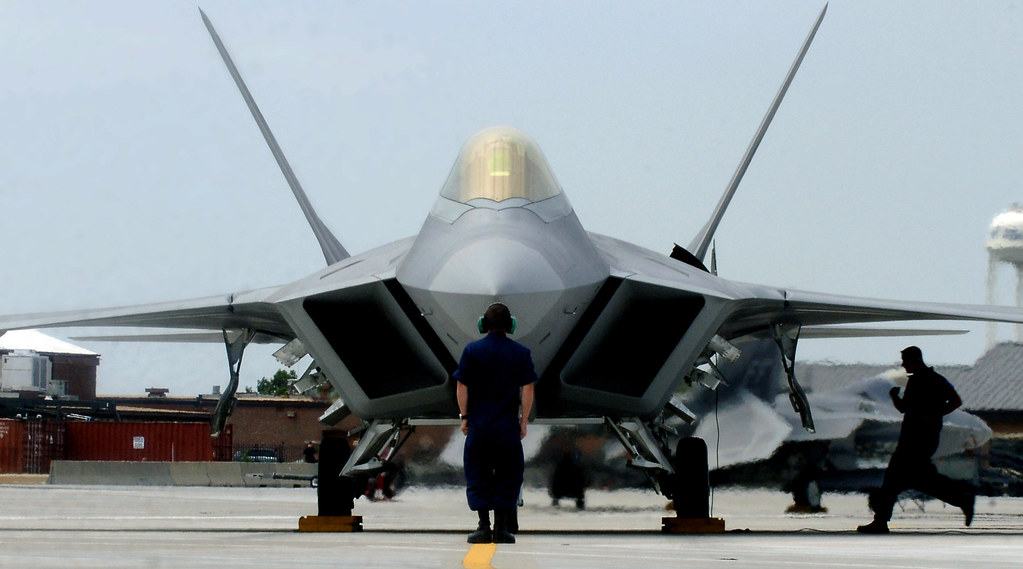
3. **The Evolving Threat Landscape**The imperative for advanced defensive systems like IRDS is driven by a rapidly evolving global threat landscape, characterized by the proliferation of increasingly sophisticated anti-missile technologies. The U.S. Air Force issued a stark warning in January about the prospect of contending with highly advanced anti-missiles, some with ranges extending up to an astonishing 1,000 miles, by the year 2050. This foresight underscores the urgent need to equip current and future platforms with superior detection and countermeasure capabilities.
Nations such as China and Russia have been actively developing and fielding new and improved air-to-air and surface-to-air missiles in recent years, pushing the boundaries of aerial warfare. A recent, albeit brief, conflict between India and Pakistan highlighted the potency of systems like the Chinese PL-15 air-to-air missile. This particular missile has been a significant factor, according to the context, in prompting the U.S. military to develop its own formidable counter, the AIM-260 Joint Advanced Tactical Missile (JATM).
These developments illustrate a relentless arms race, where superior missile technology demands superior defensive and detection systems. The F-22’s IRDS is a direct response to this challenge, ensuring that the Raptor maintains its decisive edge by enabling earlier detection of these long-range, stealthy threats. The ability to “see” the threat before being seen is paramount, allowing pilots critical time to react, maneuver, and engage, thereby preserving the F-22’s unparalleled lethality and survivability in even the most hostile environments.
Military equipment: .top
Name: .top
Introduced: November 18, 2014,(General Availability)
Type: Generic top-level domain
Status: Active
Registry: .top registry
Sponsor: Jiangsu Bangning Science & Technology Co., Ltd.
Website: url
Registereddomains: 2,066,084
Dateregistereddomains: Tue Jan 24 2023 00:00:00 GMT-0800 (Pacific Standard Time)
Categories: All articles needing additional references, All pages needing cleanup, Articles needing additional references from October 2020, Articles needing cleanup from August 2020, Articles to be expanded from August 2024
Summary: .top is a generic top-level domain, officially delegated in ICANN’s new gTLD program on August 4, 2014.
The domain name extension .top is managed and operated by the .top registry (registry backend ZDNS) which belongs to Jiangsu Bangning Science & Technology Co., Ltd. in Nanjing, China, and can be registered by anyone since November 18, 2014 without special requirements. The original marketed intent of the .top TLD is for businesses to convey that they are the ‘top’ or the best of their industry.
A second level domain under the top-level domain (TLD) .top can consist of digits, letters, hyphens and specific special characters while it can have a length of one up to (a maximum) of 63 characters. Like most other TLDs, it can be registered for a period of at least one year up to (a maximum) of 10 years in advance. The private registration (WHOIS privacy) of .top domains is supported, as is the ability to register internationalized domain names (IDNs), which include the character sets Arabic, Chinese (simplified and traditional), French, German, Japanese, Russian, and Spanish.
On 16 July 2024 ICANN issued a Notice Of Breach to the registry for failing to respond to DNS abuse reports and failing to pay fees.
Get more information about: .top
Read more about: Beyond the Road: Unpacking the Complex Journey of EV Battery Recycling and Its Future
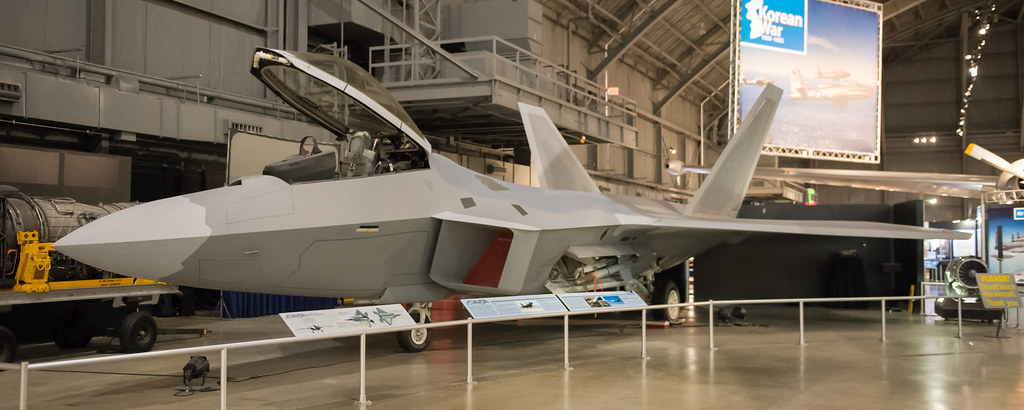
4. **Enhanced Low Observable (Stealth) Signature Management**Central to the F-22’s continued dominance is its unparalleled stealth, and the viability upgrade package includes explicit mention of enhancements to help with “Low Observable (LO) signature management.” This indicates an ongoing commitment to refining and improving the F-22’s already formidable ability to evade detection, ensuring it remains virtually invisible to enemy radar and other sensors. Maintaining this stealth advantage is non-negotiable for an air superiority fighter operating in contested airspace.
Intriguingly, recent years have seen semi-secretive tests involving “mirror-like coatings” applied to F-22s, as well as F-35 Joint Strike Fighters and even the venerable F-117 Nighthawks. While the specifics of these exotic coatings remain guarded, their observed application suggests a continuous exploration of advanced materials and surface treatments designed to further reduce radar cross-section and potentially other signature aspects. These innovations are at the cutting edge of stealth technology, pushing the boundaries of what is possible in signature reduction.
Beyond these specialized coatings, other modifications are undoubtedly being incorporated to enhance the F-22’s already significant stealth characteristics. The continuous evolution of adversary detection technologies necessitates an equally continuous advancement in stealth design and maintenance. These comprehensive LO enhancements ensure that the Raptor can penetrate deep into enemy territory, engage targets, and exit with minimal risk of detection, preserving its first-look, first-shot, first-kill advantage against any opponent.
Military equipment: Stealth technology
Categories: Aerial warfare, All articles containing potentially dated statements, All articles with dead external links, All articles with unsourced statements, Articles containing Russian-language text
Summary: Stealth technology, also termed low observable technology (LO technology), is a sub-discipline of military tactics and passive and active electronic countermeasures. The term covers a range of methods used to make personnel, aircraft, ships, submarines, missiles, satellites, and ground vehicles less visible (ideally invisible) to radar, infrared, sonar and other detection methods. It corresponds to military camouflage for these parts of the electromagnetic spectrum (i.e., multi-spectral camouflage).
Development of modern stealth technologies in the United States began in 1958, where earlier attempts to prevent radar tracking of its U-2 spy planes during the Cold War by the Soviet Union had been unsuccessful. Designers turned to developing a specific shape for planes that tended to reduce detection by redirecting electromagnetic radiation waves from radars. Radiation-absorbent material was also tested and made to reduce or block radar signals that reflect off the surfaces of aircraft. Such changes to shape and surface composition comprise stealth technology as currently used on the Northrop Grumman B-2 Spirit “Stealth Bomber”.
The concept of stealth is to operate or hide from external observation. This concept was first explored through camouflage to make an object’s appearance blend into the visual background. As the potency of detection and interception technologies (radar, infrared search and tracking, surface-to-air missiles, etc.) have increased, so too has the extent to which the design and operation of military personnel and vehicles have been affected in response. Some military uniforms are treated with chemicals to reduce their infrared signature. A modern stealth vehicle is designed from the outset to have a chosen spectral signature. The degree of stealth embodied in a given design is chosen according to the projected threats of detection.
Get more information about: Stealth technology
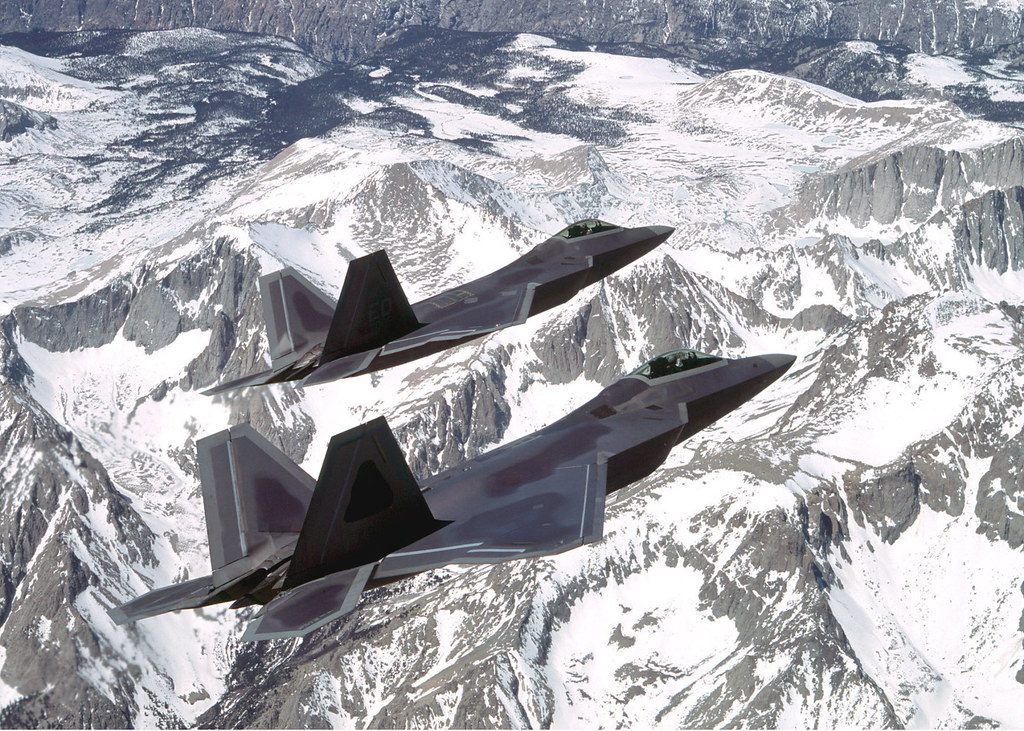
5. **Advanced Pilot Helmet Systems**Enhancing the F-22’s capabilities isn’t solely about the airframe and its sensors; it also involves empowering the pilot with superior interface technologies. The viability upgrades explicitly include helmet enhancements, addressing a long-standing desire for improved pilot-vehicle interaction. F-22 pilots are now set to receive the Thales Scorpion Helmet Mounted Displays (HMD), a crucial capability that, surprisingly, was axed during the Raptor’s initial development. The absence of such a system had, in recent years, become “increasingly pronounced,” highlighting the need for its reintroduction.
Furthermore, in 2022, the Air Force awarded LIFT Airborne Technologies a significant contract to develop a Next Generation Fixed Wing Helmet (NGFWH). This new helmet is not just for F-22 pilots but for others across various platforms, indicating a broader, forward-looking strategy for pilot equipment modernization. This initiative ensures that pilots operating high-performance aircraft like the Raptor have the best possible situational awareness and control interface at their disposal, crucial for managing the complexities of modern air combat.
These advanced helmet systems, especially the HMDs, provide pilots with vital flight and targeting information directly within their line of sight, overlaid onto their view of the outside world. This reduces head-down time, improves target acquisition, and enhances overall decision-making speed – all critical factors in fast-paced aerial engagements. By integrating these cutting-edge helmet technologies, the F-22 ensures its pilots are equipped with a superior interface, maximizing their effectiveness and leveraging the full potential of the aircraft’s advanced systems.
Military equipment: Helmet-mounted display
Categories: All articles lacking reliable references, All articles needing additional references, All articles with failed verification, All articles with specifically marked weasel-worded phrases, All articles with unsourced statements
Summary: A helmet-mounted display (HMD) is a headworn device that uses displays and optics to project imagery and/or symbology to the eyes. It provides visual information to the user where head protection is required – most notably in military aircraft. The display-optics assembly can be attached to a helmet or integrated into the design of the helmet. An HMD provides the pilot with situation awareness, an enhanced image of the scene, and in military applications cue weapons systems, to the direction their head is pointing. Applications which allow cuing of weapon systems are referred to as helmet-mounted sight and display (HMSD) or helmet-mounted sights (HMS).
Get more information about: Helmet-mounted display
Read more about: Beyond Boot Camp: 14 Essential Military Hacks That Could Be Your Lifeline in a Crisis

6. **Podded Infrared Search and Track (IRST) Sensors**Distinct from the internal Infrared Defensive System (IRDS), the F-22 is also slated to receive its own dedicated Infrared Search and Track (IRST) capability, a separate but equally vital upgrade. The Air Force’s Fiscal Year 2026 budget has finally confirmed that this capability will come in a podded form, an upgrade that eagle-eyed observers have noted Raptors flying with stealthy underwing sensor pods for years. This podded approach offers flexibility and modularity, allowing for continuous upgrades and specialized sensor configurations.
The budget documents emphasize the strategic importance of this development: “The Sensor Enhancement capability will improve the F-22’s sensing and tracking and ensures Air Superiority by preserving the first look, first shot and first kill capabilities of the 142 Block 30/35 F-22 aircraft.” This highlights the IRST’s role in detecting and tracking targets passively, without emitting radar signals that could alert an adversary, thus maintaining the F-22’s stealth advantage and allowing it to engage threats from beyond visual range without revealing its presence.
To expedite the deployment of this critical capability, the new budget proposal confirms that the Air Force has already placed initial production orders for two separate lots, totaling 30 pods (15 pods each). The ambition is to have the first of these pods, each containing an “advanced Infrared Search and Track sensor,” delivered by the second quarter of Fiscal Year 2028, with additional testing slated to continue in the interim. This rapid acquisition timeline underscores the urgency and importance placed on enhancing the Raptor’s passive sensing capabilities.
IRST systems, in general, are experiencing a global resurgence due to their invaluable ability to complement or even replace radar in certain scenarios. They are particularly effective at spotting and tracking stealthy aircraft and missiles, offering the significant advantage of being passive. This means they do not emit signals that an opponent can detect, making them immune to the ever-growing threats posed by electronic warfare systems. The inclusion of this podded IRST capability, therefore, is a strategic move to future-proof the F-22 against sophisticated and evolving electronic threats.
Military equipment: Infrared search and track
Categories: All articles needing additional references, Articles needing additional references from April 2023, Articles with short description, Commons category link is on Wikidata, Infrared imaging
Summary: An Infrared Search and Track (IRST) system (sometimes called infrared sighting and tracking) detects and tracks objects that emit infrared radiation, such as the infrared signatures of jet aircraft and helicopters.
A generalized case of forward-looking infrared (FLIR) systems, IRST systems provide all-around situation awareness. Their thermographic cameras are passive: unlike radar, they do not emit radiation and therefore do not add to an aircraft’s emissions signature. Within range, an IRST’s angular resolution is better than radar because infrared has a shorter wavelength than radar emissions. But an IRST’s range is less than radar because infrared emissions are attenuated by the atmosphere and by poor weather (although less so than visible light).
Get more information about: Infrared search and track
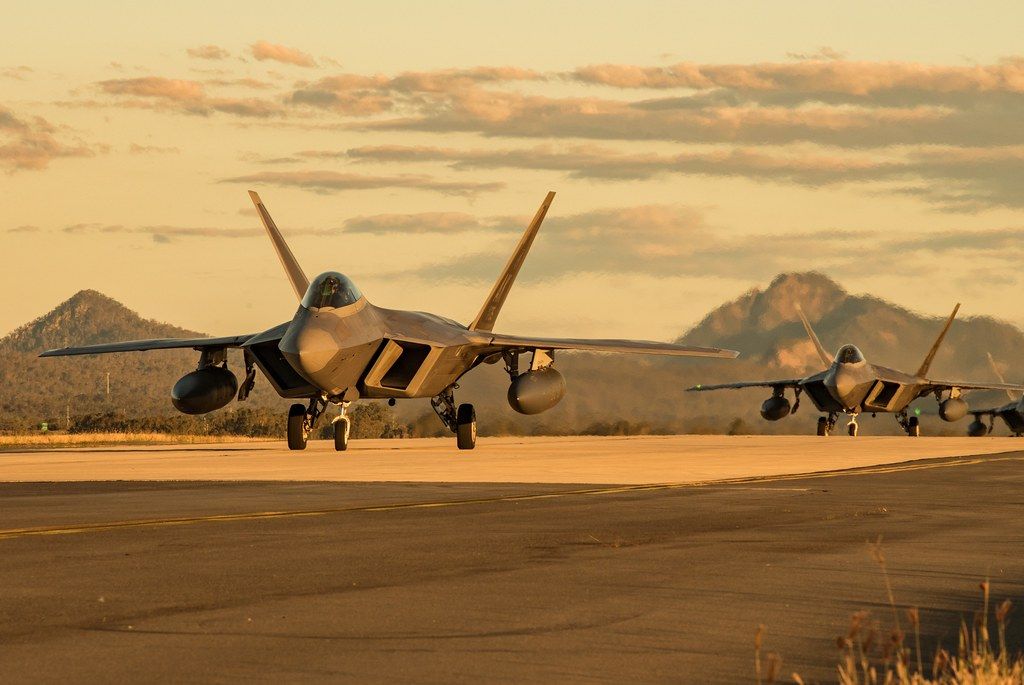
7. **Networked IRST Capabilities**The full potential of the F-22’s new infrared sensing capabilities truly comes to light when considering the possibility of networking its various IRST systems. The context explicitly mentions that there remains a possibility that the new IRDS and the separate podded IRST capabilities could work together, forming a “powerful combination” that significantly amplifies the Raptor’s situational awareness and targeting precision. This synergistic approach promises a leap forward in the F-22’s ability to detect and engage threats.
One of the inherent limitations of a single IRST sensor platform is its ability to instantaneously determine a target’s range. As the context explains, “IRSTs, in general, are typically only able to instantaneously determine a target’s angle and bearing, and track it, with it taking more effort to determine its range using just a single sensor platform.” While excellent for detection and tracking, pinpointing exact range with a single sensor requires additional effort and time.
However, this challenge is elegantly overcome through networking. “Two IRST sensors on separate aircraft that are networked together can instantly triangulate the target’s range, which can then provide more robust engagement-quality target tracks.” This capability has been demonstrated by Lockheed Martin, notably in combination with its Legion Pod, and is a common practice among aircraft equipped with advanced IRST systems. The IRST21 sensor, for instance, used in Legion Pods and other configurations, is a traditional gimbaled type that benefits greatly from such networking.
This networked IRST capability offers a profound tactical advantage. By instantly and accurately determining a target’s range, it provides the F-22 with engagement-quality targeting data, crucial for employing long-range weapons like the AIM-260 JATM. This ensures that the F-22 can execute its “first look, first shot, first kill” doctrine with even greater precision and effectiveness, solidifying its role as an undisputed air superiority fighter against any present or future adversary.
Military equipment: AIM-174B Gunslinger
Name: AIM-174B Gunslinger
Caption: Boeing F/A-18E/F Super Hornet
Type: Beyond-visual-range missile,air-to-air missile
Origin: flagicon image,United States of America
IsExplosive: true
IsVehicle: true
IsMissile: true
Service: [object Object]
UsedBy: flagicon image,United States Navy
Manufacturer: Raytheon
Mass: convert
Length: 15.5 ft
Abbr: on
Filling: High explosive,blast-fragmentation
FillingWeight: 140 lb
Detonation: fuze
Engine: Solid-fuel rocket
VehicleRange: convert
Speed: cvt
Guidance: inertial navigation
Diameter: 13.5 in
Wingspan: 62.0 in
LaunchPlatform: Boeing F/A-18E/F Super Hornet
Categories: Air-to-air missiles of the United States, Articles with short description, Beyond-visual-range air-to-air missiles, Commons category link from Wikidata, Good articles
Summary: The AIM-174B Gunslinger is a very long-range air-to-air missile (AAM) developed by U.S. defense contractor Raytheon and used by the United States Navy (USN). The AIM-174B is a derivative of the RIM-174B Standard Extended Range Active Missile (ERAM, Standard Missile-6, or SM-6) surface-to-air missile, a member of the extended Standard Missile family, with the USN describing the AIM-174B as the “Air-Launched Configuration” of the SM-6. The AIM-174B’s existence was first revealed publicly in July 2024 at RIMPAC 2024 and has been confirmed to be capable of being carried and launched only by the Boeing F/A-18E/F Super Hornet.
Described as a “massive” AAM, the Gunslinger has a confirmed range of 150 miles (130 nautical miles or 240 kilometers), though it is widely speculated that the range may be much greater.
In addition to the AIM-174’s air-to-air role, the Gunslinger is believed capable of engaging other missiles (including ballistic missiles and hypersonic weapons), and may also serve as an air-to-ground and anti-ship missile.
Get more information about: AIM-174B Gunslinger
Read more about: The Enduring Journey: Unpacking the Profound Reasons Why Americans Are Keeping Their Cars for Two Decades and Beyond
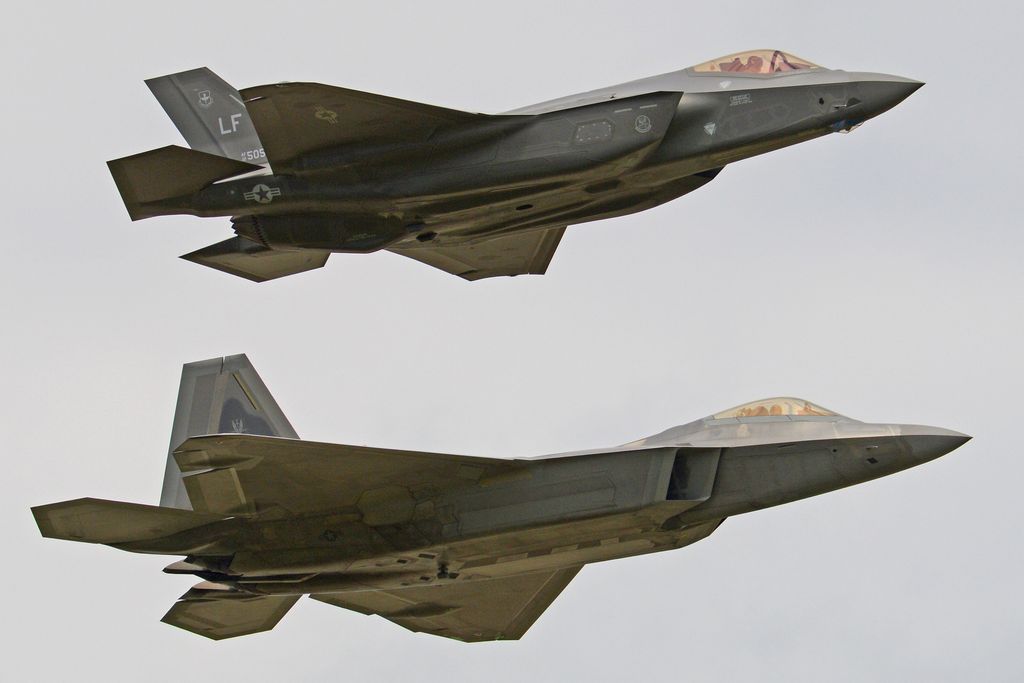
8. **Stealthy Range-Extending Drop Tanks**The F-22’s inherent stealth, while paramount, often comes with a trade-off in unrefueled range when operating in vast theaters. Recognizing this, the Air Force has diligently pursued the development of stealthy, low-drag drop tanks, known as Low Drag Tanks and Pylons (LDTP), to significantly extend the Raptor’s operational reach without compromising its critical low-observable characteristics. These aren’t your typical bulky fuel tanks; they are engineered with advanced aerodynamic and stealth designs to integrate seamlessly with the F-22’s profile.
According to the Air Force’s 2026 Fiscal Year budget request, these advanced technological designs are aimed at “providing increased persistence and range while maintaining lethality and survivability.” The ambition is clear: to minimally increase drag during external tank carriage, facilitate supersonic flight even with these external tanks attached, and ultimately extend the F-22’s vital range. Furthermore, the pylons themselves are equipped with “smart rack pneumatic technology” designed to accurately control ejection performance while maintaining minimum drag without stores. This level of engineering detail underscores the commitment to preserving every ounce of the F-22’s performance envelope.
The LDTP program is currently focused on finalizing technology maturation and conducting crucial risk reduction tasks. This includes the procurement of test pylons, rigorous evaluation of designs for continuous improvement, and the completion of a manufacturing readiness assessment to ensure smooth production. Extensive analysis is also underway to support the development and execution of initial flight tests, aiming to reach speeds of up to 0.95 Mach with the tanks. The program will continue its Engineering and Manufacturing Development (EMD) phase, which encompasses procuring additional LDTP assets and support equipment, further evaluating designs, and critically, executing flight tests for the threshold envelope up to 1.2 Mach, alongside LDTP qualification and certification. This methodical approach ensures that when these tanks are deployed, they meet the F-22’s exacting performance and stealth standards.
Military equipment: AGM-158 JASSM
Name: Joint Air-to-Surface Standoff Missile Extended Range (JASSM-ER)
Type: Air-launched cruise missile
Origin: United States
IsMissile: true
Service: 2003–present
UsedBy: United States Air Force,Royal Australian Air Force,Polish Air Force,Finnish Air Force
Wars: American-led intervention in the Syrian civil war
Designer: Lockheed Martin
DesignDate: Mon Dec 31 2001 16:00:00 GMT-0800 (Pacific Standard Time)
Manufacturer: Lockheed Martin Missiles and Fire Control
UnitCost: $1,040,000 AGM-158B, FY20
,$1,665,000 AGM-158B-2, FY24
ProductionDate: AGM-158 since 2006
,AGM-158B-2 since FY2024
Number: 3360
SpecLabel: AGM-158B JASSM-ER
Mass: cvt
Length: cvt
Width: cvt
Height: cvt
Filling: WDU-42/B penetrator
FillingWeight: cvt
Detonation: FMU-156/B AGM-158B
,FMU-162/B AGM-158B-2 and on
Engine: Williams F107
EnginePower: 1,400 lbf (6.22 kN)
VehicleRange: cvt
Guidance: Inertial navigation system,Imaging infrared,GPS
Steering: tailplane
Accuracy: cvt,Circular error probable
LaunchPlatform: Rockwell B-1 Lancer,Northrop B-2 Spirit,Boeing B-52 Stratofortress,McDonnell Douglas F-15E Strike Eagle,General Dynamics F-16 Fighting Falcon,McDonnell Douglas F/A-18 Hornet,Rapid Dragon
Ref: Janes Information Services,Assistant Secretary of the Air Force (Financial Management & Comptroller)
Wingspan: cvt
Categories: Air-launched cruise missiles, Air-to-surface missiles of the United States, All Wikipedia articles in need of updating, All articles lacking reliable references, All articles with dead external links
Summary: The AGM-158 Joint Air-to-Surface Standoff Missile (AGM-158 JASSM) is a low detection standoff air-launched cruise missile developed by Lockheed Martin for the United States Armed Forces. It is a large, stealthy long-range weapon with a 1,000-pound (450 kg) armor piercing warhead. It completed testing and entered service with the U.S. Air Force in 2009, and has entered foreign service in Australia, Finland, and Poland as of 2014. An extended range version of the missile, the AGM-158B JASSM-ER (Joint Air-to-Surface Standoff Missile-Extended Range), entered service in 2014 as well as an anti-ship derivative, the AGM-158C LRASM (Long Range Anti-Ship Missile) in 2018. By September 2016, Lockheed Martin had delivered 2,000 total JASSMs comprising both variants to the USAF.
Get more information about: AGM-158 JASSM
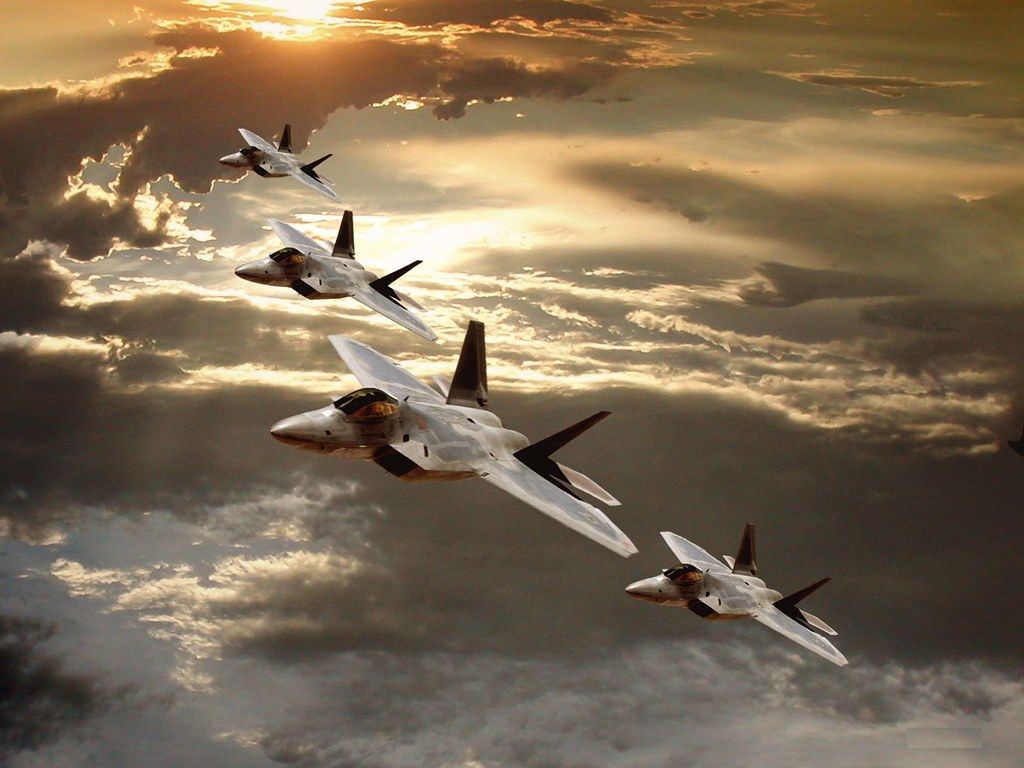
9. **Core Avionics and Communications Modernization**Beyond physical enhancements like stealth coatings and external tanks, the F-22’s digital heart and nervous system are also undergoing significant upgrades. The Air Force’s proposed budget for Fiscal Year 2026 clearly indicates a commitment to push ahead with long-standing work aimed at improving the F-22’s communications suite and core avionics. In the rapidly evolving landscape of modern warfare, an aircraft is only as effective as its ability to process information, communicate seamlessly with other assets, and adapt to dynamic threats. These modernizations are essential to ensure the Raptor remains a fully integrated and potent force within the joint battlespace.
The term “avionics” encompasses a vast array of electronic systems crucial for flight, navigation, communication, and mission execution. Modernizing these components means enhancing processing power, improving data links, and integrating advanced software capabilities that can handle the exponentially growing volume of information in a contested environment. These upgrades will not only make the F-22’s internal systems more robust and resilient against cyber threats – as cyber security is explicitly mentioned in the viability package – but also enable faster decision-making for pilots. The goal is to ensure the F-22 can effectively operate and share data across diverse platforms, maintaining its edge in complex, multi-domain operations.
A key aspect of this modernization includes “future crypto upgrades.” In an era where secure communication is paramount, updating cryptographic systems is non-negotiable for protecting sensitive mission data and preventing adversarial interception or spoofing. Alongside this, “dynamic Synthetic Aperture Radar (SAR)” enhancements are also part of the broader viability package, suggesting improvements to the F-22’s ground-mapping and targeting capabilities. These combined efforts will allow the Raptor to not only dominate the skies but also contribute significantly to reconnaissance and strike missions, extending its versatility and tactical utility in future conflicts.
Military equipment: Boeing F-15EX Eagle II
Name: F-15EX Eagle II
Caption: An F-15EX Eagle II from the 40th Flight Test Squadron flies above Northern California, May 2021.
Type: Multirole combat aircraft
NationalOrigin: United States
Manufacturer: Boeing Defense, Space & Security
FirstFlight: 20 February 2013 (F-15SA, the first Advanced Eagle) ,2 February 2021 (F-15EX)
Introduced: July 2024 (F-15EX)
NumberBuilt: #tag:ref
Status: In service
PrimaryUser: United States Air Force
MoreUsers: Royal Saudi Air Force,Qatari Emiri Air Force
Produced: 2011–present (Advanced Eagle)
DevelopedFrom: McDonnell Douglas F-15E Strike Eagle
Categories: 4.5-generation jet fighters, Aircraft first flown in 2021, Aircraft with retractable tricycle landing gear, All Wikipedia articles written in American English, Articles with short description
Summary: The Boeing F-15EX Eagle II is an American multirole fighter derived from the McDonnell Douglas F-15E Strike Eagle. The aircraft resulted from U.S. Department of Defense (DoD) studies in 2018 to recapitalize the United States Air Force’s (USAF) tactical aviation fleet that was aging due to curtailed modernization, particularly the truncated F-22 production, from post-Cold War budget cuts. The F-15EX is a variant of the F-15 Advanced Eagle, a further development of the F-15E design initially intended for export and incorporates improved internal structure, flight control system, and avionics. The aircraft is manufactured by Boeing’s St. Louis division (formerly McDonnell Douglas).
The Advanced Eagle began with the F-15SA (Saudi Advanced) which first flew in 2013, followed by the F-15QA (Qatari Advanced) in 2020. The F-15EX had its maiden flight in 2021 and took advantage of the active export production line to reduce costs and expedite deliveries for the USAF; it entered operational service in July 2024. The F-15EX is expected to replace the remaining F-15C/D in the U.S. Air Force and Air National Guard for performing homeland and air defense missions and also serves as an affordable platform for employing large stand-off weapons to augment the frontline F-22 and F-35. The Advanced Eagle in this configuration represents the current baseline in F-15 production.
Get more information about: Boeing F-15EX Eagle II
Read more about: Beyond the Missiles: Why China’s Cyber and Space Forces Are the True Game-Changers from Beijing’s Grand Parade
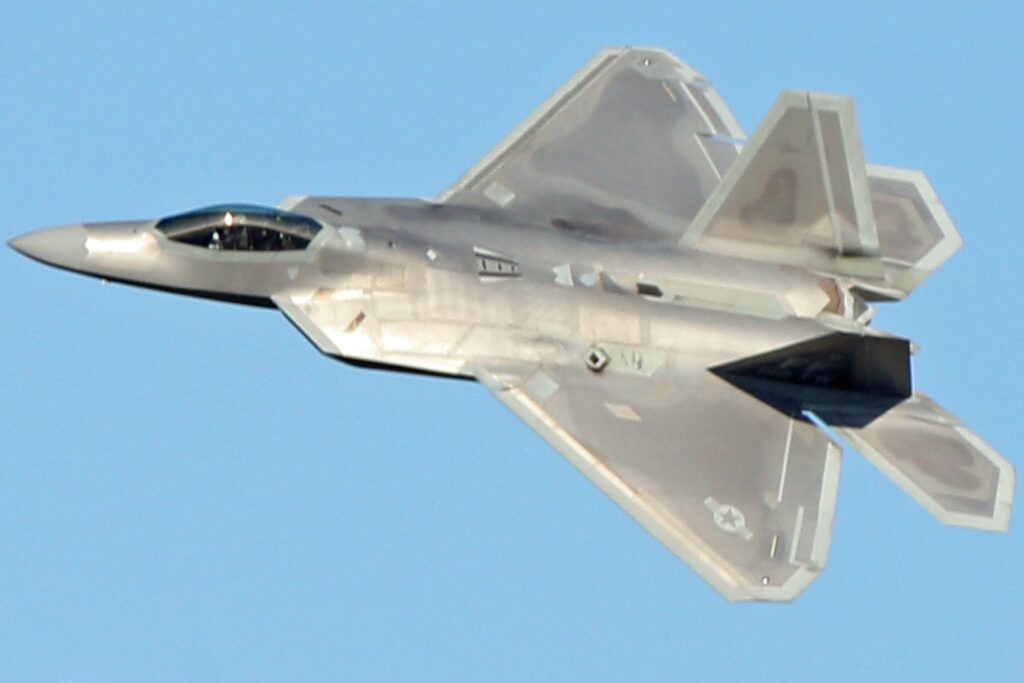
10. **Sustaining the Fleet: Enhancing Reliability and Maintainability**The F-22 Raptor, for all its unparalleled capabilities, has long been described as a “notoriously maintenance-intensive” aircraft. Recognizing that even the most advanced fighter is only as effective as its operational availability, the Air Force is continuing existing, critical efforts to improve the reliability and sustainability of the Raptor fleet. This isn’t just about keeping planes in the air; it’s about optimizing the entire lifecycle of these complex machines, reducing downtime, and ensuring that the small but highly capable F-22 force can consistently meet the demands placed upon it.
Improving reliability and sustainability involves a multifaceted approach, from refining maintenance procedures and supply chains to integrating predictive maintenance technologies. It addresses the challenges posed by the F-22’s specialized stealth coatings, which are known to be difficult and costly to maintain, as well as the intricate systems housed within its airframe. By making the Raptor easier and less costly to maintain, the Air Force can increase the number of combat-coded F-22s available for deployment at any given time, thereby maximizing the return on investment for this invaluable asset.
These efforts are particularly crucial given that a “significant portion of the overall fleet is typically down for maintenance” at any given time. With only 143 of the 185 F-22s currently designated as combat-coded, every improvement in sustainability directly translates into a more potent and ready air superiority force. By extending the operational life and readiness rates of the F-22, these sustainment programs ensure that the upgraded Raptors can effectively bridge the gap until the next generation of air dominance fighters fully comes online, providing a continuous shield of air superiority for the nation.
Military equipment: Assault Amphibious Vehicle
Name: AAVP7A1 RAM/RS
Caption: An Assault Amphibious Vehicle of the U.S. Marines, assigned to the 1st Battalion, 23rd Infantry Convoy, conduct a simulated amphibious assault during exercise BALTOPS 2017 in Latvia.
Origin: United States
Type: Armoured personnel carrier
Designer: United Defense
Manufacturer: United Defense,BAE Systems Platforms & Services#US Combat Systems
DesignDate: 1964–1969
ProductionDate: 1972–present
IsVehicle: true
Service: 1972–2025 (United States Marine Corps)
UsedBy: Amphibious Assault Vehicle#Operators
Wars: Falklands War,Lebanese Civil War,Invasion of Grenada,Gulf War,Somali Civil War,Iraq War
Length: 7.94 m (26 ft 1 in)
Width: 3.27 m (10 ft 9 in)
Height: 3.26 m (10 ft 8 in)
Weight: Convert
Suspension: Torsion beam suspension
Speed: 72 km
Abbr: Douglas sea scale
VehicleRange: 480 km
PrimaryArmament: Mk 19 grenade launcher
Armour: Convert
Engine: Detroit Diesel
Crew: 3+21
Categories: All articles needing additional references, All articles with dead external links, Amphibious armoured personnel carriers, Armored personnel carriers of the United States, Armoured personnel carriers of Japan
Summary: The Assault Amphibious Vehicle (AAV)—official designation AAVP-7A1 (formerly known as Landing Vehicle, Tracked, Personnel-7 abbr. LVTP-7)—is a fully tracked amphibious landing vehicle manufactured by BAE Systems Platforms & Services (previously by United Defense, a former division of FMC Corporation).
The AAV-P7/A1 is the current amphibious troop transport of the United States Marine Corps. It is used by U.S. Marine Corps Amphibious Assault Battalions to land the surface assault elements of the landing force and their equipment in a single lift from assault shipping during amphibious operations to inland objectives and to conduct mechanized operations and related combat support in subsequent mechanized operations ashore. It is also operated by other forces. Marines call them “amtracs”, a shortening of their original designation, “amphibious tractor”.
In June 2018, the Marine Corps announced they had selected the BAE Systems/Iveco wheeled SuperAV for the Amphibious Combat Vehicle (ACV) program to supplement and ultimately replace the AAV.
Get more information about: Assault Amphibious Vehicle
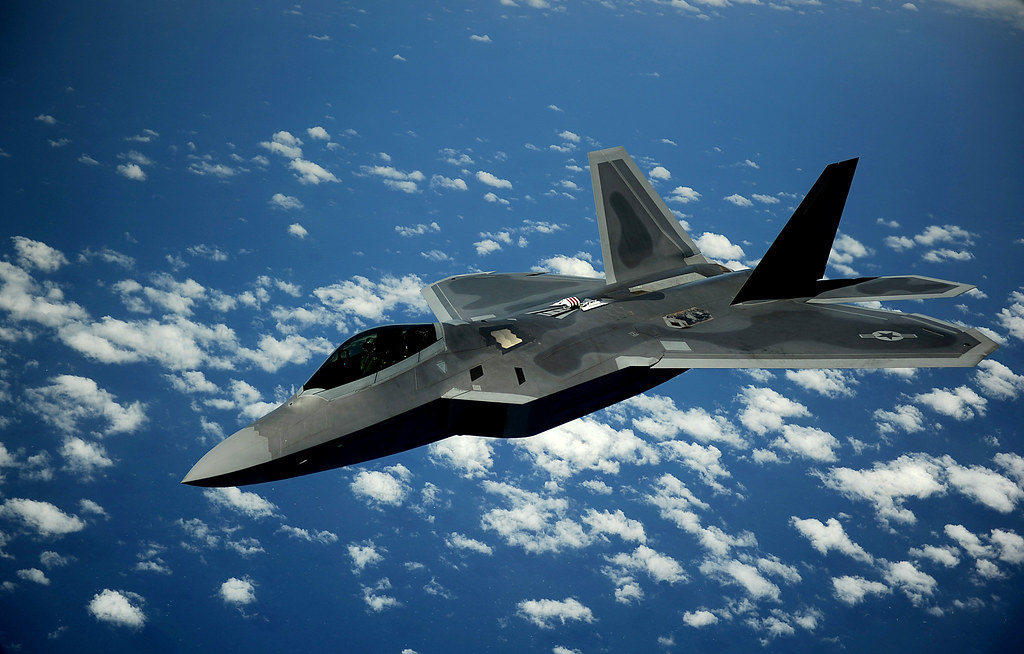
11. **Strategic Reversal: The F-22’s Unforeseen Longevity**For a period, the future of the F-22 Raptor fleet was shrouded in uncertainty. Until recently, the U.S. Air Force had a stated plan: the F-22s would eventually be replaced by a new sixth-generation stealth combat jet under the Next Generation Air Dominance (NGAD) initiative. This sentiment echoed through discussions, including those from then-Air Force Chief of Staff Gen. Charles Q. Brown in 2021, who articulated a desire to reduce the number of fighter fleets from seven to around four, seemingly implying the F-22 might be phased out.
However, a dramatic strategic shift has occurred, spearheaded by top-level political declarations. In May, President Donald Trump announced plans for a “beautiful” and extensive “super” upgrade for the F-22 Raptor, explicitly reversing previous intentions to phase out the legendary stealth fighter. Describing the F-22 as “the most beautiful fighter in the world,” Trump promised “we’re going to be doing an F-22 super,” signaling an unequivocal commitment to its future. This presidential endorsement, as the context points out, “certainly carries weight” in guiding military procurement and modernization efforts.
This reversal is not just rhetorical; it’s backed by concrete budgetary requests. The Air Force’s new budget request for Fiscal Year 2026 includes over $90 million specifically for the “F-22 Viability” program, confirming the institutional commitment to these upgrades. This strategic pivot ensures that America’s premier air superiority fighter, once slated for an early retirement, will not only remain operational but will evolve into an even more lethal and relevant force. It effectively recalibrates the F-22’s expected service life and its indispensable role in the national defense strategy, demonstrating a renewed appreciation for its unmatched capabilities in a dynamic global environment.
Military equipment: F-22 Raptor
Contractor:: Lockheed-Martin
Service:: USAF
Armament:: M61A2 cannon; 2x AIM-9 ; 6x AIM-120; 2x GBU-32; 2x AIM-120
Power Plant:: Two Pratt & Whitney F119-PW-100 turbofan engines with afterburners and two-dimensional thrust vectoring nozzles
Speed:: Mach 2
Range:: 1,600 nm
Categories: Military Aircraft, Air Force Aircraft, Air Force Attack Aircraft, Air Force Fighters, Attack Aircraft
Get more information about: F-22 Raptor
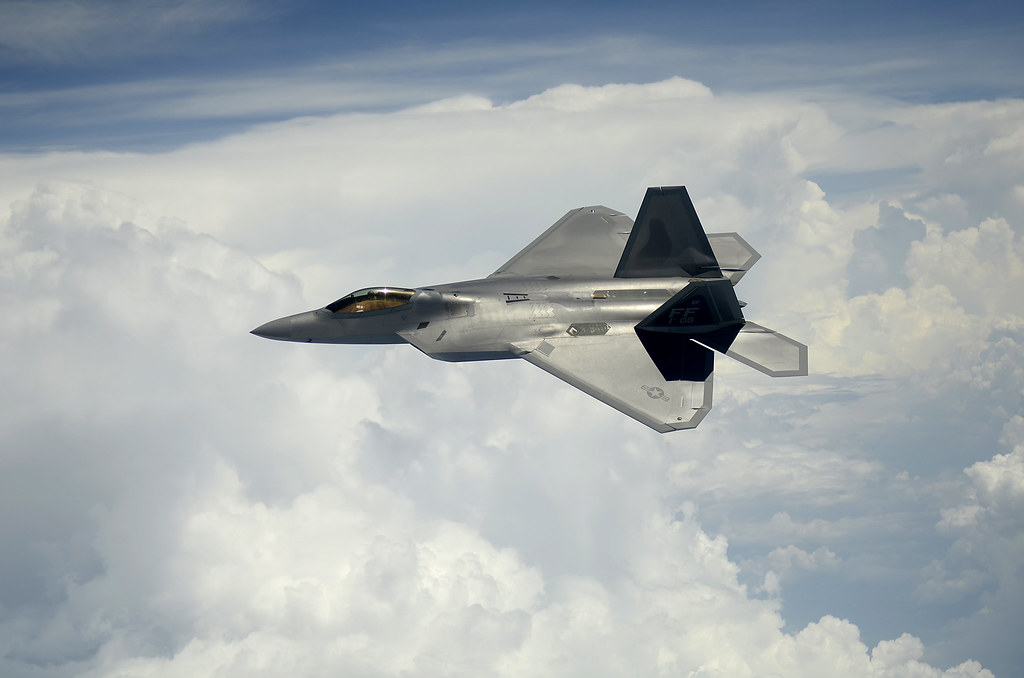
12. **The F-22’s Enduring Role Alongside NGAD (F-47)**Despite the F-22’s renewed commitment, its long-term future remains intertwined with the progress of the Next Generation Air Dominance (NGAD) program, specifically the new sixth-generation combat jet, now officially designated the F-47. The Air Force’s plan was originally for the F-22 to be entirely replaced by this next-gen platform. However, the NGAD combat jet plan itself experienced a period of uncertainty, being put on hold last year, leading to questions about its future and, by extension, the F-22’s.
While the NGAD combat jet program did survive, with Boeing selected to build the F-47, and the Pentagon showing “an extremely firm vote of confidence” with a request for $3.5 billion in funding for FY2026, important questions persist. The expected size of the F-47 fleet and the precise timeline for when these jets might begin to enter service remain unclear. This ambiguity highlights the F-22’s crucial role as a bridge, maintaining air dominance until the F-47 can be fielded in sufficient numbers to take over.
The F-22’s modernization work is also leveraging developments from NGAD and, conversely, feeding into that initiative. This symbiotic relationship ensures that lessons learned and technologies matured for the F-22 can inform the F-47’s design, and vice versa. While the F-47 represents the future, the F-22, through its upgrades, serves as a vital, operational testbed and a continuously evolving platform that guarantees a seamless transition in air superiority capabilities, preventing any capability gaps as the Air Force looks towards its sixth-generation future.
Military equipment: CH-47D Chinook
Manufacturer: Boeing
Service: US Army
Armament: 3x M240 7.62 machine guns
Propulsion: 2x Lycoming T55-GA-714A turboshaft
Max Speed: 184 mph
Range: 400 mi
Troop Capacity: 36 (33 troops plus 3 crew members)
Sling-Load Capacity: 26,000 lb center hook
The Chinook’s cockpit accommodates two pilots and an observer. The communications suite includes jam resistant HF and UHF radio systems and the helicopter is equipped with an Identification Friend or Foe (IFF) interrogator. Three machine guns can be mounted on the helicopter, two in the crew door on the starboard side and one window-mounted on the port side. Additionally, the helicopter is equipped with a suite of countermeasure systems, which could include one or more of the following: a missile approach warner, jammers, radar warner, and chaff and flare dispensers.
Categories: Military Aircraft, Army Aircraft, Army Helicopters, Helicopters, Transport Aircraft
Get more information about: CH-47D Chinook
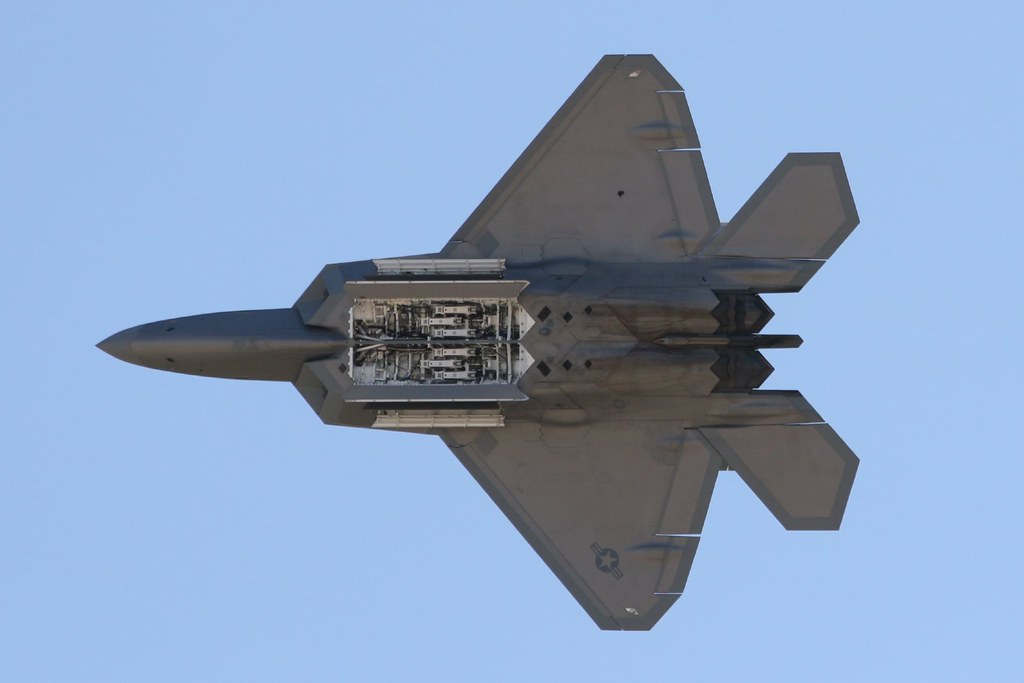
13. **Ensuring Relevance: F-22’s Extended Service Life into the 2040s**The ongoing upgrades and strategic re-evaluation firmly anchor the F-22 Raptor in the U.S. Air Force’s plans for the foreseeable future, pushing its operational lifespan well beyond previous projections. This is a significant shift from earlier considerations of retiring some older F-22 airframes to save costs. Instead, the Air Force now intends to “squeeze as much life out of their Raptors as possible,” cementing its position as the cornerstone of the fighter fleet until the Next Generation Air Dominance platform is fully established and deployed.
Evidence of this extended commitment comes from various sources. A graphic released by the Air Force in May detailed plans for current fourth and fifth-generation fighter fleets alongside the forthcoming F-47 and Collaborative Combat Aircraft (CCA) drones. This graphic indicates a plan to acquire “185+” F-47s, which would, at a minimum, allow for a one-for-one replacement of the F-22s. Crucially, Lockheed Martin, the F-22’s manufacturer, has publicly stated that the Raptor “could stay in service into the 2040s.” This projection underscores the profound impact of the current modernization efforts.
The new viability upgrade effort serves as “the latest signal that the F-22’s career is still far from over.” It’s a clear declaration that the Air Force is not just maintaining the Raptor but actively investing in its evolution, ensuring that this elite fleet remains as capable as possible for years, even decades, to come. By extending the F-22’s service life into the 2040s, these upgrades guarantee that America retains a decisive edge in air superiority, offering a powerful deterrent and a formidable combat platform for an extended period, ensuring that the Air Force’s “first look, first shot, first kill” ethos remains firmly intact.
Military equipment: Space colonization
Categories: All Wikipedia articles written in American English, Articles with excerpts, Articles with short description, Astropolitics, Colonialism
Summary: Space colonization (or extraterrestrial colonization) is the settlement or colonization of outer space and astronomical bodies. The concept in its broad sense has been applied to any permanent human presence in space, such as a space habitat or other extraterrestrial settlements. It may involve a process of occupation or control for exploitation, such as extraterrestrial mining.
Making territorial claims in space is prohibited by international space law, defining space as a common heritage. International space law has had the goal to prevent colonial claims and militarization of space, and has advocated the installation of international regimes to regulate access to and sharing of space, particularly for specific locations such as the limited space of geostationary orbit or the Moon. To date, no permanent space settlement other than temporary space habitats have been established, nor has any extraterrestrial territory or land been internationally claimed. Currently there are also no plans for building a space colony by any government. However, many proposals, speculations, and designs, particularly for extraterrestrial settlements have been made through the years, and a considerable number of space colonization advocates and groups are active. Currently, the dominant private launch provider SpaceX, has been the most prominent organization planning space colonization on Mars, though having not reached a development stage beyond launch and landing systems.
Space colonization raises numerous socio-political questions. Many arguments for and against space settlement have been made. The two most common reasons in favor of colonization are the survival of humans and life independent of Earth, making humans a multiplanetary species, in the event of a planetary-scale disaster (natural or human-made), and the commercial use of space particularly for enabling a more sustainable expansion of human society through the availability of additional resources in space, reducing environmental damage on and exploitation of Earth. The most common objections include concerns that the commodification of the cosmos may be likely to continue pre-existing detrimental processes such as environmental degradation, economic inequality and wars, enhancing the interests of the already powerful, and at the cost of investing in solving existing major environmental and social issues.
The mere construction of an extraterrestrial settlement, with the needed infrastructure, presents daunting technological, economic and social challenges. Space settlements are generally conceived as providing for nearly all (or all) the needs of larger numbers of humans. The environment in space is very hostile to human life and not readily accessible, particularly for maintenance and supply. It would involve much advancement of currently primitive technologies, such as controlled ecological life-support systems. With the high cost of orbital spaceflight (around $1400 per kg, or $640 per pound, to low Earth orbit by SpaceX Falcon Heavy), a space settlement would currently be massively expensive, but ongoing progress in reusable launch systems aim to change that (possibly reaching $20 per kg to orbit), and in creating automated manufacturing and construction techniques.
Get more information about: Space colonization
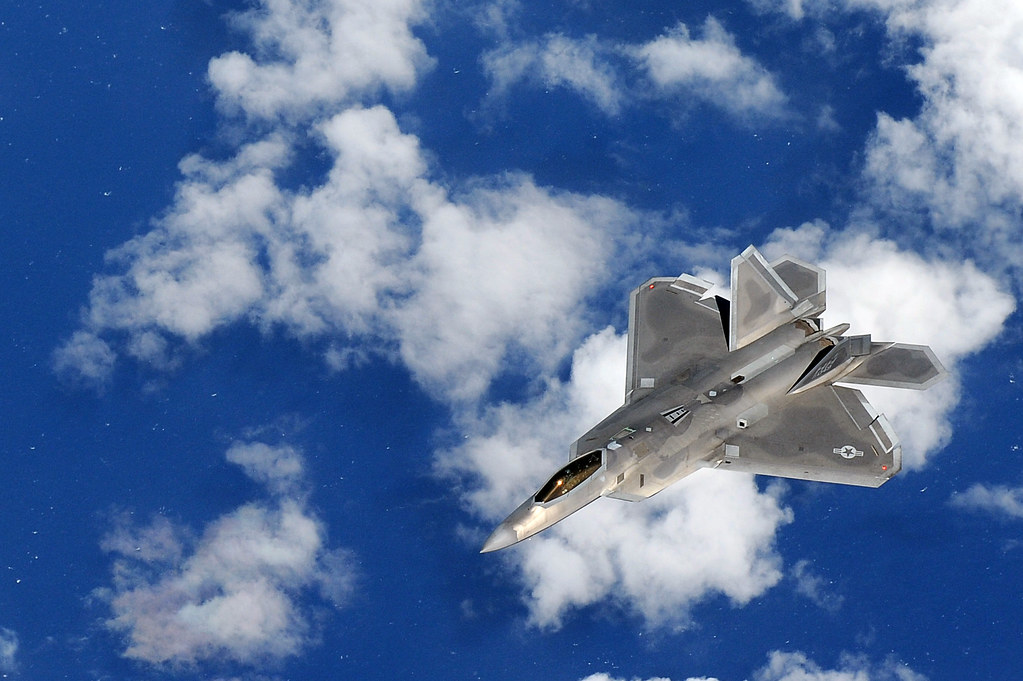
14. **The “Super” F-22: A Legacy Forged in Innovation**The transformation of the F-22 Raptor into a “super” stealth fighter is more than just a series of technical enhancements; it represents a strategic reaffirmation of its enduring value and a powerful statement about America’s commitment to maintaining air dominance. From its enhanced low observable signature management and advanced infrared defensive systems to its modernized avionics and range-extending tanks, every upgrade is meticulously designed to push the boundaries of aerial warfare and ensure the F-22 remains unmatched in lethality and survivability.
This article has taken us on an in-depth exploration of how these innovations are redefining the F-22. We’ve seen how improvements in threat detection through IRDS, the passive tracking capabilities of podded and networked IRSTs, and the refinement of stealth features are vital responses to a rapidly evolving global threat landscape. Furthermore, enhancements to pilot interfaces via advanced helmets and the focus on sustainment highlight a holistic approach to readiness, ensuring that the Raptor’s human-machine interface is as cutting-edge as its airframe.
Military equipment: Legacy of Kain
Title: Legacy of Kain
Caption: The series logo as of Legacy of Kain: Defiance
Platforms: Dreamcast,Evercade,GameCube,Microsoft Windows,Nintendo Switch,PlayStation (console),PlayStation 2,PlayStation 4,PlayStation 5,Xbox (console),Xbox One,Xbox Series X/S
Developer: Silicon Knights
Publisher: Eidos Interactive
Genre: Action-adventure game
Creator: Denis Dyack
FirstReleaseVersion: Blood Omen: Legacy of Kain
FirstReleaseDate: Fri Nov 01 1996 00:00:00 GMT-0800 (Pacific Standard Time)
LatestReleaseVersion: Legacy of Kain: Soul Reaver 1 & 2 Remastered
LatestReleaseDate: Tue Dec 10 2024 00:00:00 GMT-0800 (Pacific Standard Time)
Categories: Action-adventure games, Apocalyptic video games, Articles with short description, CS1 errors: missing title, CS1 maint: bot: original URL status unknown
Summary: Legacy of Kain is a series of dark fantasy action-adventure video games primarily developed by Crystal Dynamics and formerly published by Eidos Interactive. The first title, Blood Omen: Legacy of Kain, was created by Silicon Knights in association with Crystal Dynamics, but, after a legal battle, Crystal Dynamics retained the rights to the game’s intellectual property, and continued its story with four sequels. To date, five games comprise the series, all initially developed for video game consoles and later ported to Microsoft Windows. Focusing on the eponymous character of Kain, a vampire antihero, each title features action, exploration and puzzle-solving, with some role-playing game elements.
The series takes place in the fictional land of Nosgoth—a gothic fantasy setting—and revolves around Kain’s quest to defy his fate and restore balance to the world. Legacy of Kain: Soul Reaver introduced another antihero protagonist, Raziel; the adventures of both characters culminate in Legacy of Kain: Defiance. Themes of destiny, free will, morality, redemption and the hero’s journey recur in the storyline, which was inspired by ancient literature, horror fiction, Islamic art and culture, Shakespeare’s plays, Jewish mysticism and gnosticism. The Legacy of Kain games have enjoyed critical success, particularly receiving praise for high-quality voice acting, narrative, and visuals, and, as a whole, had sold over 3.5 million copies by 2007. In 2022, Square Enix sold the rights of the series to the Embracer Group, who have expressed interest in developing sequels, remakes and remasters of Legacy of Kain.
Remastered versions of Legacy of Kain: Soul Reaver and Soul Reaver 2 were released for the Nintendo Switch, PlayStation 4, PlayStation 5, Windows, Xbox One and Xbox Series X/S in 2024.
Get more information about: Legacy of Kain
The F-22’s journey, from a potential early retirement to its current resurgence as the “super” fighter, is a testament to its foundational design and the strategic foresight now being applied to its future. As the bridge to the next generation of air superiority in the form of the F-47, the Raptor’s continued evolution guarantees that the U.S. Air Force will possess a formidable and adaptable force capable of confronting any challenge. The F-22, in its upgraded form, is not merely extending its service life; it is solidifying its legacy as an undisputed icon of aerial combat, ready to secure the skies for decades to come.


